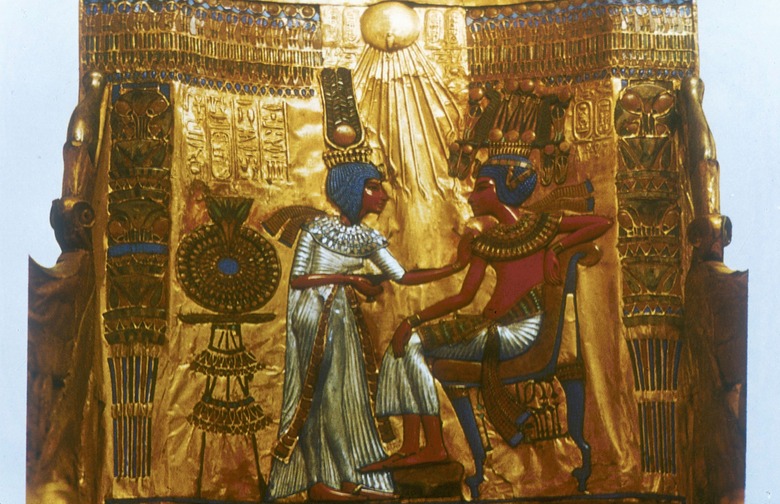Resting Places For The Dead In Ancient Egypt
Burial in ancient Egypt started out a simple process, but over the centuries became more and more elaborate. Ancient Egyptians believed people were made up of a body and a soul, and after death the soul would return to the body. For this reason, care was taken to preserve bodies and make them identifiable in the afterlife that followed their burials.
Beneath the Sand
Beneath the Sand
In the earliest Egyptian burial practices, prior to 3100 B.C., the body was simply buried in the ground. Personal articles and possessions were usually buried with the body to help the soul remain connected to it. Bodies buried in the arid, sandy landscape were naturally dried and preserved. This type of burial persisted throughout ancient Egyptian history, since common people often couldn't afford expensive tombs or embalming.
Brick Mastabas
Brick Mastabas
Eventually the wealthy and the royal decided they wanted a fancier resting place than a simple pit in the ground. This led to the development of the mastaba, a tomb built from mud bricks that looked like a small bench or house. Mastabas were rectangular in shape, with flat roofs and sloping sides. They often had a chamber for offerings above ground, and a cellar containing the burial chamber. These new tombs led to the development of mummification, since the bodies placed in them decayed, making them unable to host souls, without the mummification process. Simple mastabas were just large enough for a coffin and a few personal items, while royal mastabas were elaborate structures with many rooms. The use of mastabas began before 3100 B.C. and continued being used by nobles through the time of pyramids.
Royal Pyramids
Royal Pyramids
To differentiate themselves further from the masses, pharaohs began building pyramids to house their coffins. Built from stone blocks, the pyramids began as small, step-structures around 2700 B.C., but evolved into the massive several-hundred-foot-high monuments built around 2600 B.C. These pyramids were often part of a large complex meant to be inhabited by the pharaoh when his soul returned to his body. The pyramid contained passages and rooms filled with riches and all the things the pharaoh would need. Paintings of gods and events from the pharaoh's life decorated the interior walls. The last pyramids were built around 1700 B.C.
Cut in Stone
Cut in Stone
The massive pyramids eventually were replaced with rock cut tombs, such as the one that contained the sarcophagus of Tutankhamen, who ruled until 1339 B.C., with the first tombs built alongside pyramids around 2300 B.C. As with the mastabas, anyone who could afford one could have a tomb cut into rock. The rock tombs of the wealthiest nobles and pharaohs were just as elaborate as the inside of the pyramids, with many rooms, passages and traps and tricks meant to deter tomb robbers. The walls of the tombs were painted as in the pyramids, with the same types of items placed inside. The opening might be marked with a simple set of stairs, or sculpture carved from the rock at the entrance.
References
- Rosicrucian Egyptian Museum: Burial Practices, Afterlife and Mummies
- The British Museum: Mummification
- Michael C. Carlos Museum of Emory University: Egypt — Death & Burial
- Michael C. Carlos Museum of Emory University: Egypt — Mastabas
- Michael C. Carlos Museum of Emory University: Egypt — Rock-Cut
- Michael C. Carlos Museum of Emory University: Egypt — Pyramids
- The British Museum: A Time Line of Egyptian Pyramids
Cite This Article
MLA
Kokemuller, Jill. "Resting Places For The Dead In Ancient Egypt" sciencing.com, https://www.sciencing.com/resting-places-for-the-dead-in-ancient-egypt-12757069/. 11 November 2013.
APA
Kokemuller, Jill. (2013, November 11). Resting Places For The Dead In Ancient Egypt. sciencing.com. Retrieved from https://www.sciencing.com/resting-places-for-the-dead-in-ancient-egypt-12757069/
Chicago
Kokemuller, Jill. Resting Places For The Dead In Ancient Egypt last modified March 24, 2022. https://www.sciencing.com/resting-places-for-the-dead-in-ancient-egypt-12757069/
